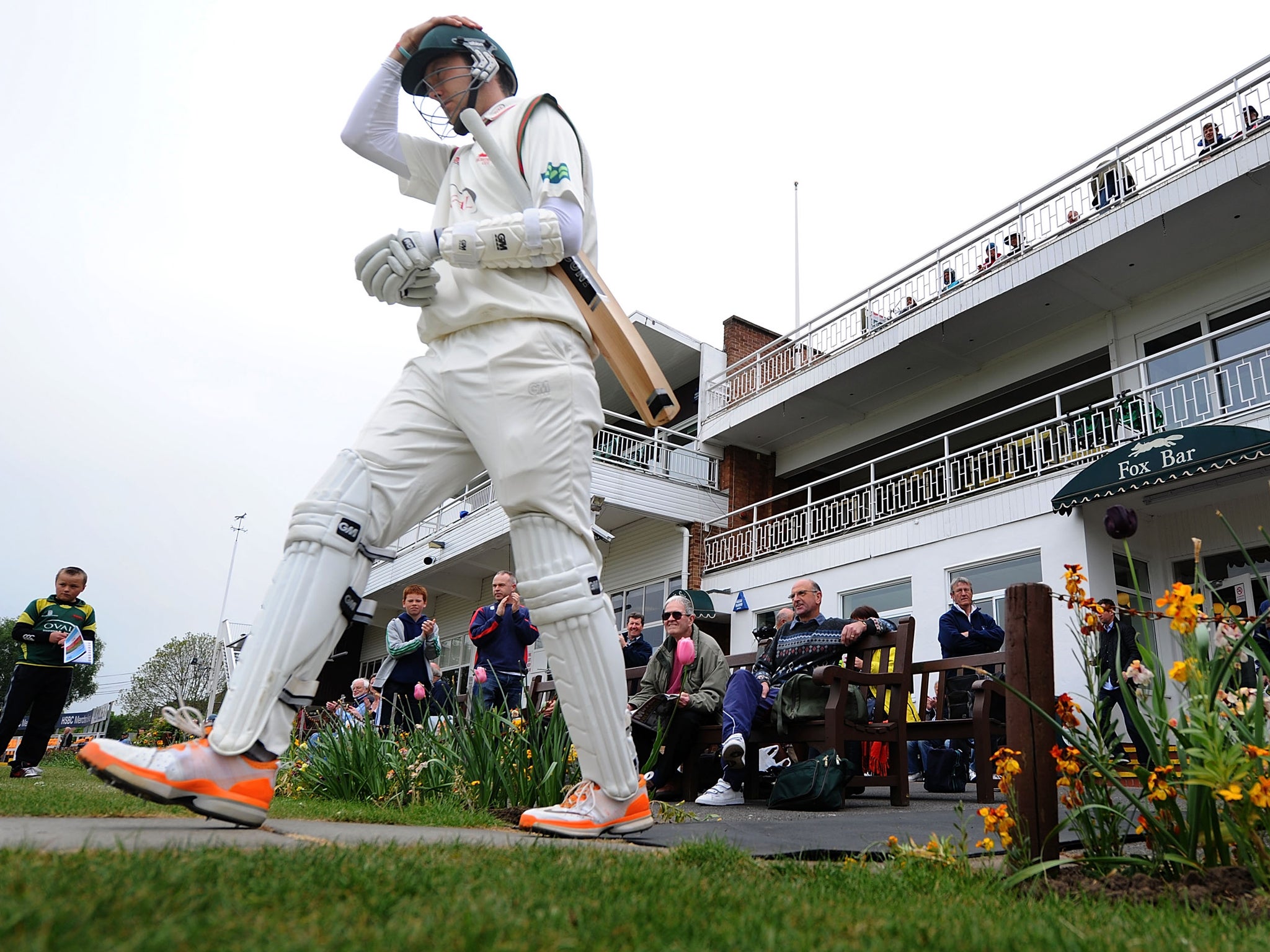Exclusive: Only half of county cricketers come from UK state schools
Ratio likely to be even less than that for England's opening team in Ashes series on Wednesday

Your support helps us to tell the story
From reproductive rights to climate change to Big Tech, The Independent is on the ground when the story is developing. Whether it's investigating the financials of Elon Musk's pro-Trump PAC or producing our latest documentary, 'The A Word', which shines a light on the American women fighting for reproductive rights, we know how important it is to parse out the facts from the messaging.
At such a critical moment in US history, we need reporters on the ground. Your donation allows us to keep sending journalists to speak to both sides of the story.
The Independent is trusted by Americans across the entire political spectrum. And unlike many other quality news outlets, we choose not to lock Americans out of our reporting and analysis with paywalls. We believe quality journalism should be available to everyone, paid for by those who can afford it.
Your support makes all the difference.Only half the current crop of county cricketers come from a UK state school background, according to research released to The Independent today.
And, when England take to the field against Australia on Wednesday, the likelihood is just four of the final 11 will have been educated at state school.
The research has been carried out by All Out Cricket magazine for Chance to Shine - the charity which aims to boost the take-up of cricket in state schools.
It shows that - of the 413 players currently engaged on the county circuit - a total of 207 (50 per cent) were state educated, 119 (29 per cent) privately educated and 21 per cent educated abroad - mainly in South Africa or Australia. Only seven per cent of the nation's children are educated privately.
Of the 13 selected for the squad, six - Jimmy Anderson, Tim Bresnan, Steve Finn, Joe Root, Graeme Swann and Graham Onions - were educated in the state sector - and five at private schools Alastair Cook, Jonny Bairstow, Ian Bell, Stuart Broad and Matt Prior. Jonathan Trott and Kevin Pietersen were educated in South Africa.
However, as the two to be left out are likely to come from Bresnan, Finn or Onions - it looks as though only four former state school pupils will take the field.
It used to be said in the 1950's that most of the batsmen who played for England came from Cambridge or Oxford but that - when the team wanted a new fast bowler - they would whistle down the pits. Today's research shows there is still a batsman/bowler divide when it comes to where England team members are educated.
The research findings will fuel Chance to Shine's campaign to spread cricket to state schools. Since 2005, it has brought cricket and its educational benefits - research has also shown playing the game can boost a pupil's leadership skills and lead to improved behaviour at school - to 7,000 state schools and reached over two million children. The programme costs £5 million a year to run and this year will give around 350,000 boys and girls competitive cricketing opportunities.
Wasim Khan, the former Warwickshire cricketer who heads the charity, said: "We're striving to bring the standard of cricket in state schools up, rather than bring independent schools down.
"Our aim, ultimately, is to give every child in every school the opportunity to play and learn through cricket. We've made great strides over the past eight years, with the support of organisations like ECB and Sport England but our work is far from over.
"When we set out, we said we'd reach a third of state schools by 2015 and we've achieved this two years ahead of schedule. The challenge now is to continue to raise significant funds so we can reach the remaining two thirds of state schools and inspire the next generation of children."
England batsman Trott, speaking at a Chance to Shine event, added: "It's important that students at secondary schools get the opportunity to play and enjoy cricket, regardless of their background."
The schools which have been most successful in producing the current crop of county players are all private schools: Millfield has nine, Bedford and Oakham six, Kings College, Taunton and Whitgift five, Brighton College and Shrewsbury three. No state school has produced more than two professional cricketers from this year's group of players.
Join our commenting forum
Join thought-provoking conversations, follow other Independent readers and see their replies
Comments